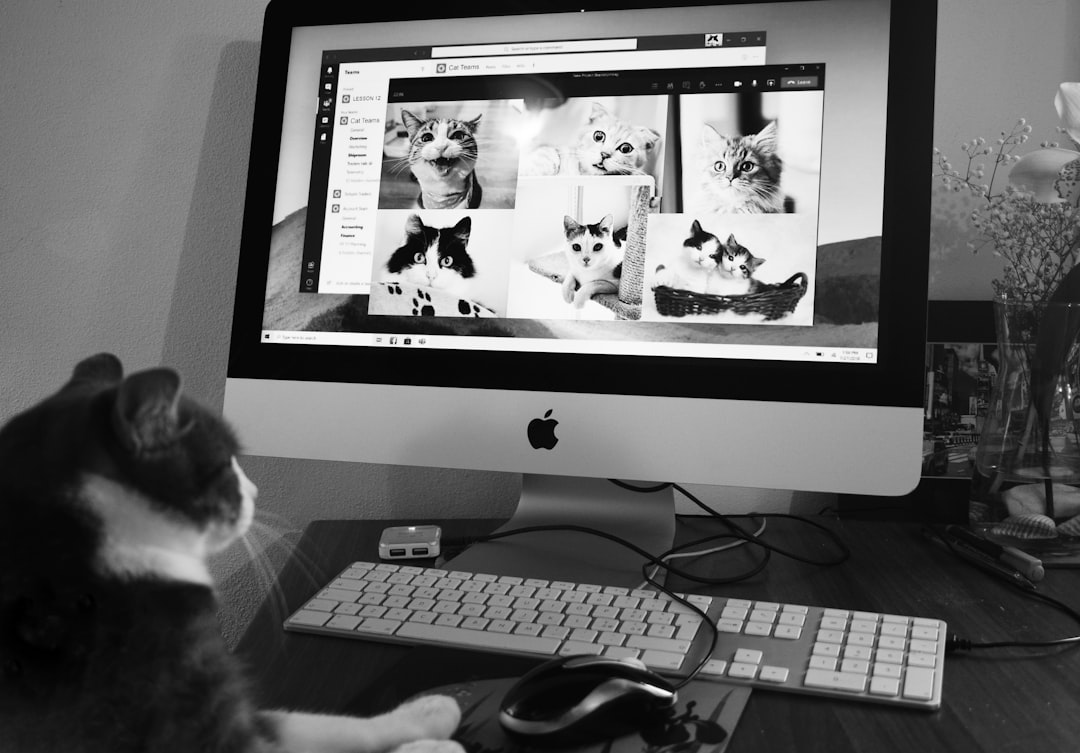Welcoming a new kitten into your home is an exciting experience, filled with cuddles and playful moments. However, to ensure a harmonious living environment, it’s essential to commit to proper kitten training. Understanding your kitten’s behavior and needs lays the foundation for effective training. Implementing positive reinforcement methods and establishing a supportive atmosphere encourages learning and socialization. As you embark on this journey, you’ll not only help your kitten thrive but also strengthen the bond between you and your furry friend. Let’s explore the fundamental aspects of kitten training that every new pet owner should know.
Understanding Your Kitten’s Behavior
To effectively approach kitten training, it’s crucial to understand your kitten’s natural instincts and behaviors. Kittens possess specific traits that can significantly influence both their learning process and daily interactions.
Key Behavioral Traits to Recognize:
- Curiosity: Kittens are naturally curious creatures. They explore their surroundings, which can lead to both positive learning experiences and occasional mischief.
- Playfulness: Play is a significant part of a kitten’s learning. Utilize toys to teach commands and reinforce positive behaviors during training sessions.
- Territoriality: Kittens may exhibit territorial behavior, especially when introducing them to new environments or pets. Understanding this helps mitigate stress during the socialization process.
Training Insights:
- Short Sessions: Kittens have limited attention spans. Keep training sessions brief—about 5 to 10 minutes.
- Consistency is Key: Use consistent commands and cues to avoid confusion during kitten training.
- Observing Body Language: Pay attention to your kitten’s body language, such as tail position and ear orientation. This insight helps tailor your training approach.
By understanding your kitten’s behavior, you lay the groundwork for successful kitten training and a harmonious relationship.
Essential Supplies for Successful Training
Having the right supplies can significantly enhance your kitten training experience. Here are the essential items you’ll need to set your new pet up for success:
Training Treats: Choose small, tasty treats. These will motivate your kitten during training sessions.
Litter Box: Select an appropriate size for your kitten to encourage proper house training.
Scratch Post: Providing a designated scratching area helps prevent unwanted scratching and aids in teaching boundaries.
Collar and Tag: These will keep your kitten safe and help with identification during socialization.
Toys: Interactive toys not only provide entertainment but also serve as rewards during training.
Training Clicker: This handy tool reinforces positive behavior by marking desired actions clearly.
Comparison of Training Supplies
| Item | Purpose | Importance |
|---|---|---|
| Training Treats | Reinforcement of good behavior | High |
| Litter Box | Proper elimination training | High |
| Scratch Post | Redirects scratching behavior | Medium |
| Collar and Tag | Identification during training | High |
| Toys | Engages and rewards during training | Medium |
| Training Clicker | Instant feedback for behavior | High |
By gathering these supplies and incorporating them into your kitten training, you will create a productive and enjoyable training environment for your furry friend.
Creating a Positive Training Environment
Establishing a positive training environment is crucial for effective kitten training. This space should be comfortable, safe, and free from distractions. Here’s how you can create an ideal setting:
- Choose a Quiet Area: Select a location away from loud noises and sudden movements to help your kitten concentrate.
- Use Comfortable Accessories: Provide cozy bedding, a litter box, and clean water nearby to keep your kitten at ease.
- Limit Distractions: Turn off the TV and avoid clutter. A calm space helps kittens focus on training.
- Set a Consistent Schedule: Regular training sessions, ideally around the same time each day, reinforce learning and routine.
- Stay Positive: Use excited tones and gentle body language. Your encouragement fosters trust and reduces stress.
By creating an environment conducive to kitten training, you’ll help your new pet feel secure and eager to learn. This not only strengthens your bond but also makes the training process enjoyable for both of you. Remember, a happy kitten is a trainable kitten!
Basic Commands Every Kitten Should Learn
When embarking on your journey of kitten training, teaching basic commands can significantly enhance your relationship with your new pet. Here are essential commands to include:
- Come: This command encourages your kitten to return to you, fostering a sense of safety.
- Sit: Teaching your kitten to sit on command not only disciplines them but also keeps them calm.
- Stay: This command helps instill patience and control, making it easier for you to manage their behavior in various situations.
Comparison of Basic Commands
| Command | Purpose | Training Tips |
|---|---|---|
| Come | Encourages safety and closeness | Use treats to lure them towards you. |
| Sit | Instills discipline and calmness | Gently push their rear down while saying "sit". |
| Stay | Teaches patience and control | Reward them for remaining in place. |
Implementing these basic commands during your kitten training sessions can create a strong foundation. Moreover, remember that consistency and patience are key to successful training. Celebrate small victories and use positive reinforcement to encourage your kitten’s progress!
House Training Your Kitten
House training your kitten is an essential part of kitten training, providing them with the structure they need to adapt to their new home. Follow these simple steps to ensure a smooth process:
Choose a Litter Box: Select a box that’s the right size for your kitten. Ideally, it should be low enough for them to access easily.
Select the Right Litter: Use a litter that is unscented and clumping to encourage your kitten’s natural instincts.
Designate a Bathroom Area: Place the litter box in a quiet, accessible spot. Avoid areas with loud noises or heavy foot traffic.
Encourage Regular Use: After meals, gently place your kitten in the litter box. Kittens usually need to relieve themselves after eating.
Reward Success: Whenever your kitten uses the litter box correctly, offer praise or a small treat. Positive reinforcement will reinforce this behavior.
Troubleshooting Tips
If your kitten has accidents:
- Clean Thoroughly: Eliminate odors that may attract them back to the same spot.
- Be Patient: Consistency is key in kitten training.
By following these guidelines, you’ll set your kitten up for successful house training and a happy living environment!
Dealing with Common Behavioral Issues
When embarking on your kitten training journey, you may encounter various behavioral issues. Understanding these problems can help you address them effectively:
Scratching Furniture: Kittens scratch to sharpen their claws. Provide a designated scratching post to redirect this behavior.
Biting or Kicking: Kittens often display playful aggression. To manage this, use toys to engage them and avoid using your hands or feet as playthings.
Litter Box Problems: If your kitten refuses to use the litter box, ensure it’s clean, accessible, and located in a quiet area. Sometimes, changing the litter type can help resolve this issue.
Fear of New Experiences: Kittens can be skittish. Gradually expose them to new sounds and environments, providing reassurance and treats during the process.
| Behavior Issue | Solution |
|---|---|
| Scratching Furniture | Offer a scratching post |
| Biting/Kicking | Use toys for play |
| Litter Box Problems | Ensure cleanliness and accessibility |
| Fear of New Experiences | Gradual exposure with reassurance |
With patience and consistency, you can successfully manage these common issues, making kitten training a smoother experience for both you and your furry friend.
Using Rewards and Positive Reinforcement
Rewarding your kitten during training is one of the most effective methods for encouraging good behavior. With kitten training, using positive reinforcement creates a joyful learning experience. Here’s how to implement this technique effectively:
Praise and Petting: When your kitten follows a command or displays desired behavior, provide immediate verbal praise and gentle petting. Your approval reinforces their action.
Treats: Use small, tasty treats as rewards. Make sure to select healthy options to avoid overfeeding. Consider these types of treats:
- Soft treats: Quickly consumed and easy to chew.
- Crunchy treats: Great for cleaning teeth while rewarding good behavior.
| Reward Type | Pros | Cons |
|---|---|---|
| Verbal Praise | Builds bond with your kitten | May be ignored if not paired with treats |
| Treats | Encourages quick learning | Can lead to overindulgence if not monitored |
| Playtime | Stimulates and entertains | Not feasible for all situations |
By using a combination of praise, treats, and play, you establish a positive association with kitten training, making them more likely to repeat the desired behaviors. Remember, consistency is key!
Socializing Your Kitten with Other Pets
Socializing your kitten with other pets is essential for developing a well-adjusted and friendly feline. Here are some effective strategies to ensure a smooth introduction and facilitate harmonious relationships:
- Start Slow: Introduce your kitten gradually to other pets. Limit initial interactions to short, supervised sessions to avoid overwhelming your kitten.
- Use Barrier Techniques: Consider using gates or crates when introducing your kitten to other pets. This allows them to observe each other without direct contact.
- Create Positive Associations: Reward both your kitten and the other pets with treats and praise during introductions. This practice reinforces positive behavior and encourages friendly interactions.
- Monitor Body Language: Watch for signs of stress or aggression. Ensure all pets feel comfortable and safe throughout the socialization process.
| Aspect | Kitten | Other Pets |
|---|---|---|
| Age | Early socialization is crucial | Varies, but older pets may need more time |
| Introductions | Gradual | Supervised |
| Reinforcement | Use treats during interactions | Maintain a calm demeanor |
By practicing these techniques, you can promote successful kitten training while fostering positive relationships with other pets in your household.
Signs of Stress to Watch For During Training
Understanding the signs of stress during kitten training is crucial for creating a positive experience. Recognizing these signals allows you to adjust your approach, ensuring your kitten feels safe and comfortable. Here are some common signs to watch for:
- Hiding: If your kitten frequently retreats to hiding spots, it may indicate anxiety.
- Aggression: Sudden swats or growls can signal discomfort or fear.
- Excessive grooming: Over-grooming can be a coping mechanism for stressed kittens.
- Dilated pupils: Wide pupils may suggest fear or heightened arousal.
- Loss of appetite: If your kitten refuses food, it might be stressed.
To alleviate stress during training:
- Short sessions: Keep sessions brief to prevent overwhelming your kitten.
- Positive reinforcement: Use treats and praise to create a supportive environment.
- Calm environment: Minimize noise and distractions to help your kitten focus.
By being vigilant and responsive to these signs, you can enhance your kitten training experience and help your furry friend thrive in their new home.
When to Seek Professional Help for Training
While many aspects of kitten training can be managed at home, certain situations may require the expertise of a professional trainer. Recognizing when to ask for help is crucial to ensure your kitten develops healthy behaviors. Here are signs to consider:
- Persistent Behavioral Issues: If your kitten frequently displays aggressive behavior or refuses to follow basic commands, it might indicate deeper issues.
- Extreme Fear or Anxiety: If your kitten shows excessive fear or anxiety during training, professional guidance can help address underlying problems.
- Destructive Behavior: Kittens that consistently destroy furniture or belongings may need specialized intervention to redirect their energy.
- Training Stagnation: If your training efforts yield little progress even after consistent practice, a professional can identify shortcomings in your approach.
In summary, seeking professional help can enhance your kitten training experience and help foster a well-adjusted companion. Remember, it’s important to prioritize your kitten’s well-being and development.



